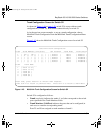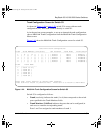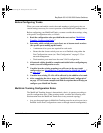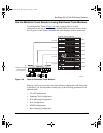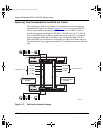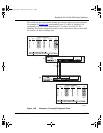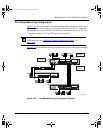
Using the BayStack 450 10/100/1000 Series Switch
1-70
302401-D Rev 00
• All trunk members must have the same VLAN configuration before the Trunk
Configuration screen’s Trunk Status field can be set to Enabled (see “VLAN
Configuration” on page 3-24).
• When an active port is configured in a trunk, the port becomes a trunk member
when you set the Trunk Status field to Enabled. The spanning tree parameters
for the port then change to reflect the new trunk settings.
• If you change the spanning tree participation of any trunk member to Enabled
or Disabled, the spanning tree participation of all members of that trunk
changes similarly (see “Spanning Tree Considerations
for MultiLink Trunks”
on page 1-72
.
• When a trunk is enabled, the trunk spanning tree participation setting takes
precedence over that of any trunk member. When a trunk is active, you can
change the trunk STP setting from either the Trunk Configuration screen or
the Spanning Tree Configuration screen.
• If you change the VLAN settings of any trunk member, the VLAN settings of
all members of that trunk change similarly.
• When you set any trunk member to Disabled (not active) through the Port
Configuration screen or through network management, the trunk member is
removed from the trunk. The trunk member has to be reconfigured through the
Trunk Configuration screen to rejoin the trunk. A screen prompt precedes this
action. A trunk member cannot be disabled if there are only two trunk
members on the trunk.
• You cannot configure a trunk member as a monitor port (see “Port Mirroring
Configuration” on page 3-45).
• Trunks cannot be monitored by a monitor port; however, trunk members can
be monitored (see “Port-Based Mirroring Configuration
” on page 1-77).
• All trunk members must have identical IGMP configurations.
• If you change the IGMP snooping configuration for any trunk member, the
IGMP snooping settings for all trunk members change.
kombk.book Page 70 Tuesday, June 29, 1999 3:25 PM




